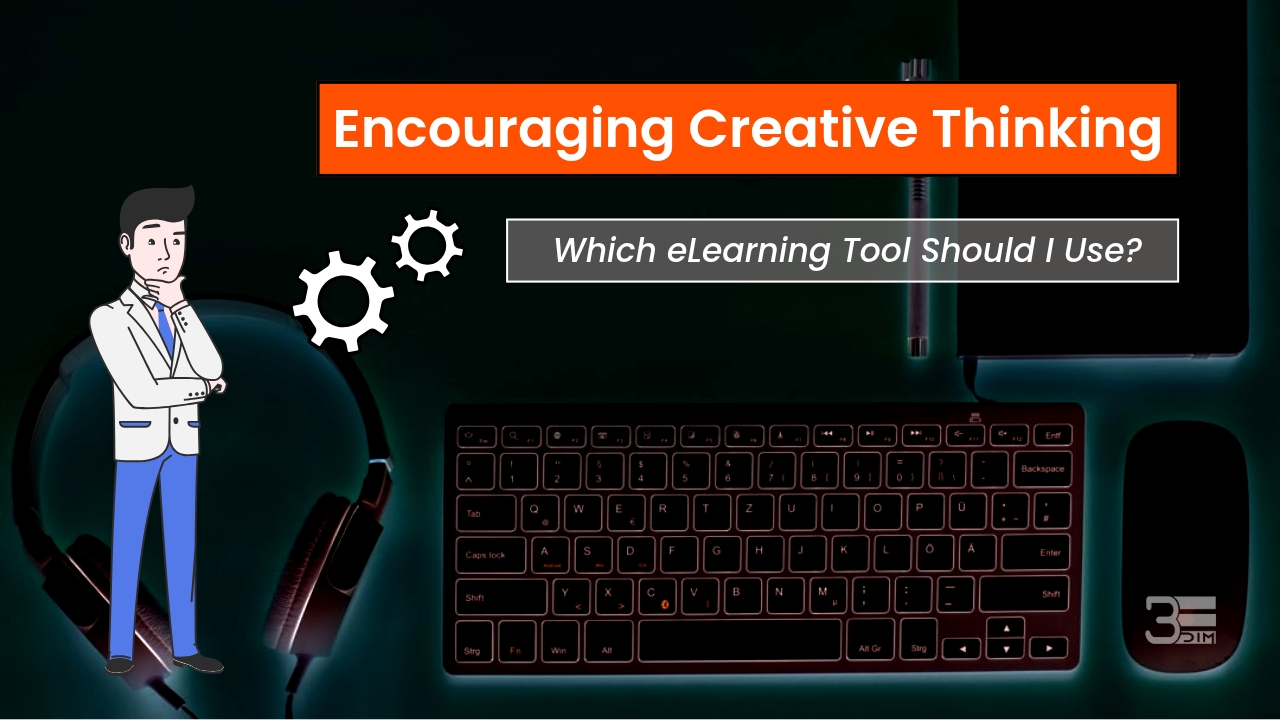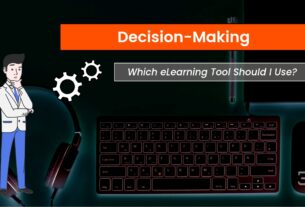Why Choosing the Right Tool Matters:
One of the most exciting challenges in online learning is not just helping students understand and memorize, but empowering them to think creatively.
Creativity is what transforms knowledge into innovation, problem-solving, and new perspectives.
With so many tools available, storytelling modules, brainstorming boards, interactive videos, project spaces, it can feel overwhelming to decide which one best encourages imagination.
That’s why we created this guide: to help you match each tool to the goal of creative thinking, making your lessons more engaging, inspiring, and impactful.
This section focuses on one of the highest goals in learning: Encouraging Creativity and Innovation.
What Is Creative Thinking in Learning?
Creative thinking means going beyond repeating information or applying standard formulas. It’s about combining ideas in new ways, imagining possibilities, solving problems, and expressing knowledge through original creations.
In education, encouraging creativity helps learners:
- Experiment with ideas without fear of failure.
- Connect concepts from different subjects.
- Express themselves through storytelling, design, or collaboration.
- Innovate by finding unique solutions to problems.
This is crucial for areas like:
-
Writing and communication skills
-
Design and visual arts
-
Problem-solving in science and technology
-
Innovation in business or entrepreneurship
-
Critical thinking and decision-making in real-life contexts
Without opportunities for creativity, learners risk becoming passive consumers of content instead of active creators. That’s why choosing tools that stimulate imagination is as important as the knowledge itself.
Recommended Tools for Encouraging Creative Thinking:
🔹 Digital Storytelling Tools
Why It Works:
Allows learners to create their own stories using images, audio, text, and video. Storytelling develops imagination, empathy, and communication skills.
Example: Learners build a short interactive story where they choose the ending.
🔹 Mind Mapping & Brainstorming Boards
Why It Works:
Helps learners visually organize thoughts, explore connections, and spark new ideas through association. Perfect for group work or project planning.
Example: A brainstorming board for “sustainable city ideas” where students add and connect their suggestions.
🔹 Branched Scenarios & Interactive Videos
Why It Works:
Learners explore different choices and see the consequences of their decisions. Encourages problem-solving and out-of-the-box thinking.
Example: An interactive video where learners design different customer service strategies and see how outcomes change.
🔹 Project-Based Assignments
Why It Works:
Gives learners freedom to create a final product that reflects their ideas and learning. Can be individual or collaborative.
Example: Learners design their own quiz, interactive timeline, or presentation on a chosen topic.
🔹 Collaborative Workspaces (Whiteboards)
Why It Works:
Boosts creativity through teamwork, idea-sharing, and co-creation. Learners inspire each other by building on group contributions.
Example: Teams design a marketing campaign for a fictional product, posting visuals, slogans, and ideas on a shared digital board.
🔹 Open-Ended Questioning & Reflection Tools
Why It Works:
Encourages learners to think deeply and creatively about content rather than just finding the “right answer.”
Example: Instead of asking “What is photosynthesis?” ask “How would plants adapt if sunlight disappeared for 3 months?”
Creativity makes learning personal and memorable. When learners generate their own ideas, stories, or solutions, they take ownership of their learning. They are not only demonstrating what they know, but also shaping new ways of thinking.
How to Use These Tools Effectively:
-
Give freedom: Allow learners to make mistakes and explore.
-
Balance structure and openness: Provide guidelines but leave room for imagination.
-
Encourage sharing: Showcase creative projects with peers to inspire others.
-
Reflect: Ask learners to explain the thinking behind their creations.
Encouraging creativity isn’t just about fun activities, it’s about preparing learners to adapt, innovate, and thrive in real life. Tools like storytelling, brainstorming boards, and interactive scenarios make creativity practical, structured, and rewarding.
Start by choosing one tool for your next lesson maybe a storytelling project or a simple collaborative whiteboard and let your learners surprise you with their ideas.
At 3E Dim, we believe every learner is a creator. With the right tools, your classroom can become a space where knowledge doesn’t just stay in memory, it grows into innovation.
Explore more in our eLearning Tools section.




